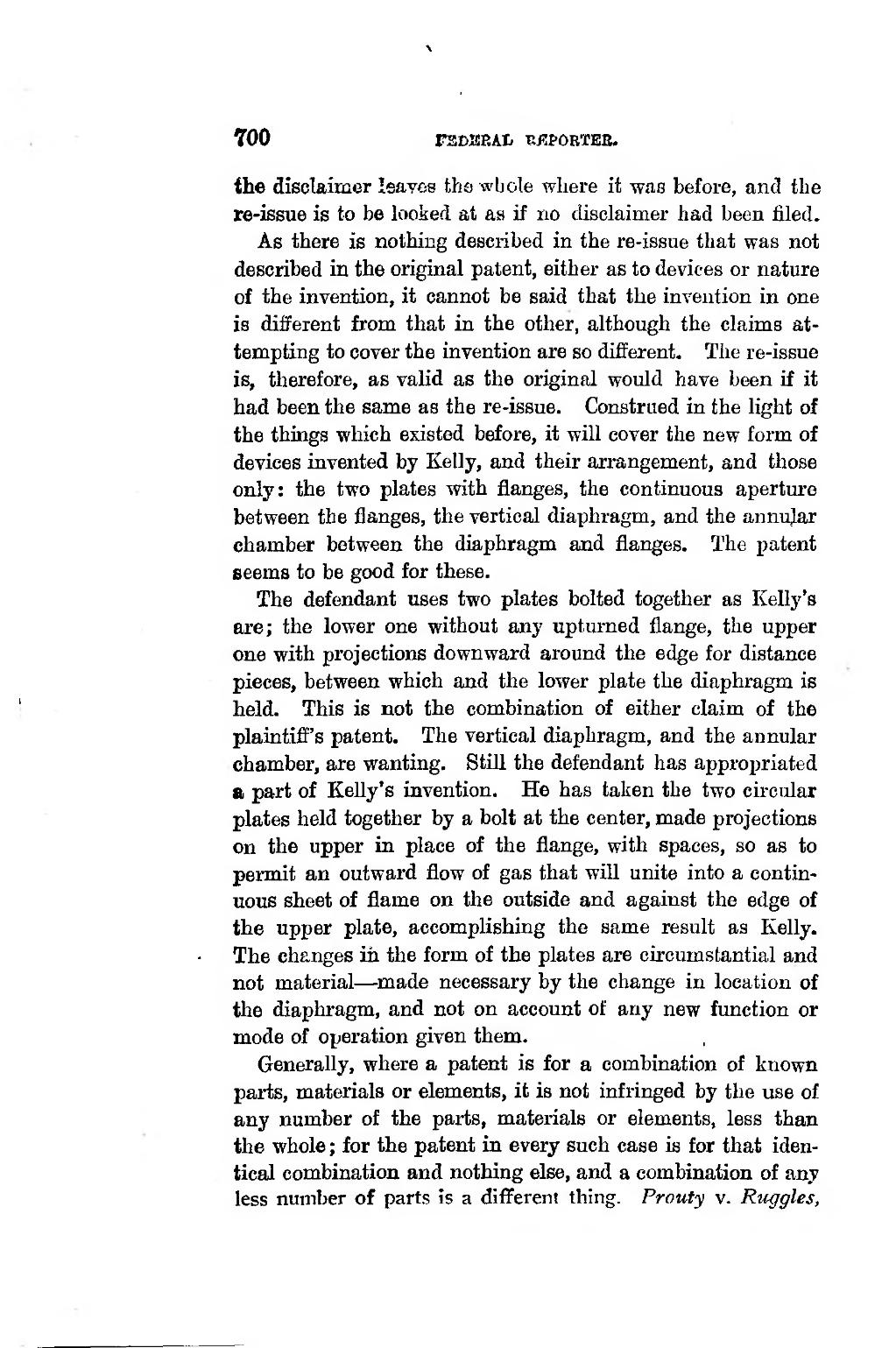700 rSDISRAIi TîJÏPORÏEE- �the disclaimcr leayes tho wijole where it waa before, and the re-issue is to be looked at as if no disclaimer had been filed. �As there is nothing described in the re-iesue that was not described in the original patent, either as to devices or nature of the invention, it cannot be said that the invention in one is different from that in the other, although the claims at- tempting to cover the invention are so different. The re-issue is, therefore, as valid as the original would have been if it had been the same as the re-issue. Construed in the light of the things which existed before, it will cover the new form of devices invented by Kelly, and their arrangement, and those only: the two plates with flanges, the continuons aperture between the flanges, the vertical diaphragm, and the annular chamber between the diaphragm and flanges. The patent seems to be good for these. �The defendant uses two plates bolted together as Kelly's are; the lower one without any upturned flange, the upper one with projections downward around the edge for distance pieces, between which and the lower plate the diaphragm is held. This is not the combination of either claim of the plaintiff's patent. The vertical diaphragm, and the annular chamber, are wanting, Still the defendant bas appropriated a part of Kelly's invention. He has taken the two circulai plates held together by a boit at the center, made projections on the upper in place of the flange, with spaces, so as to permit an outward flow of gas that will unite into a contin- uons sheet of flame on the outside and against the edge of the upper plate, accomplishing the same resuit as Kelly. The changes iii the form of the plates are circumstantial and not material — made necessary by the change in location of the diaphragm, and not on account of any new function or mode of operation given them. �Generally, where a patent is for a combination of known parts, materials or elements, it is not infringed by the use of any number of the parts, materials or elements, less than the whole ; for the patent in every such case is for that iden- tical combination and nothing else, and a combination of any less number of parts is a different thing. Prouty v. Ruggles, ����
Page:Federal Reporter, 1st Series, Volume 2.djvu/707
This page needs to be proofread.
